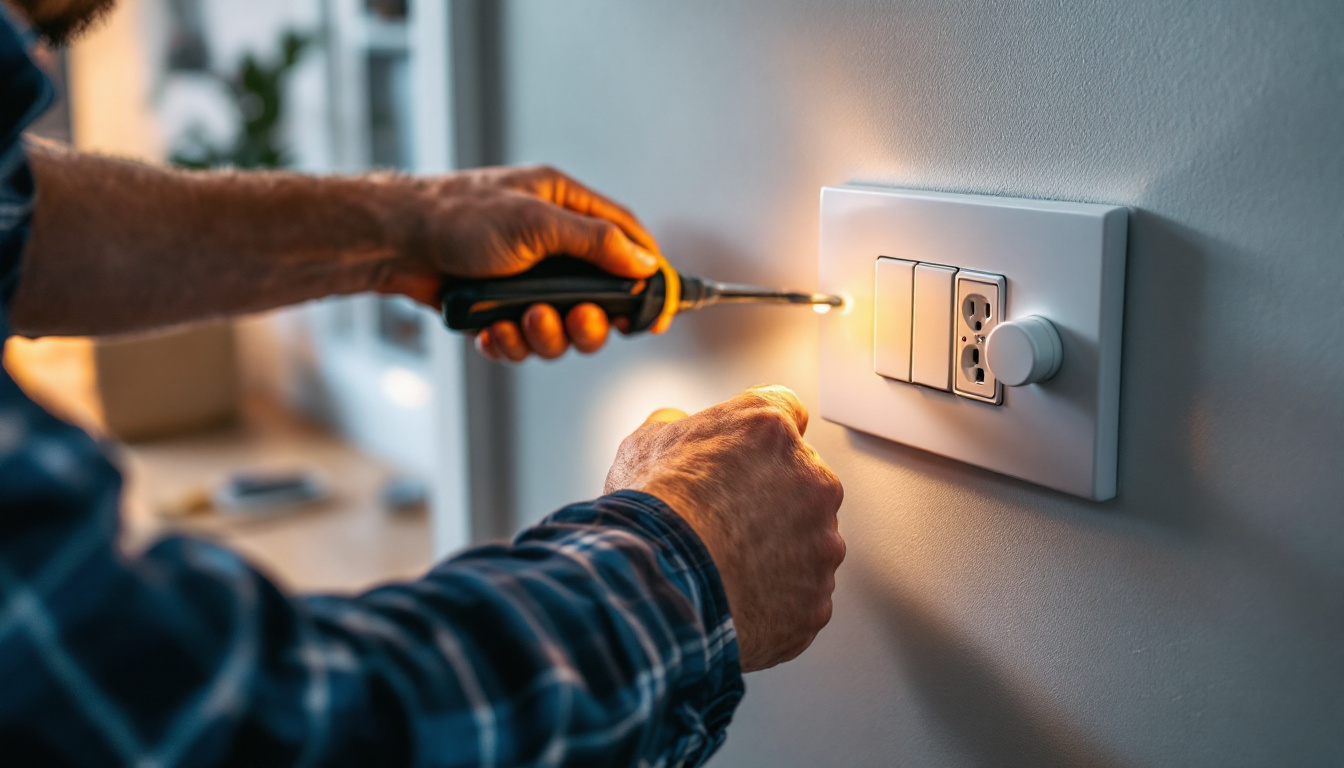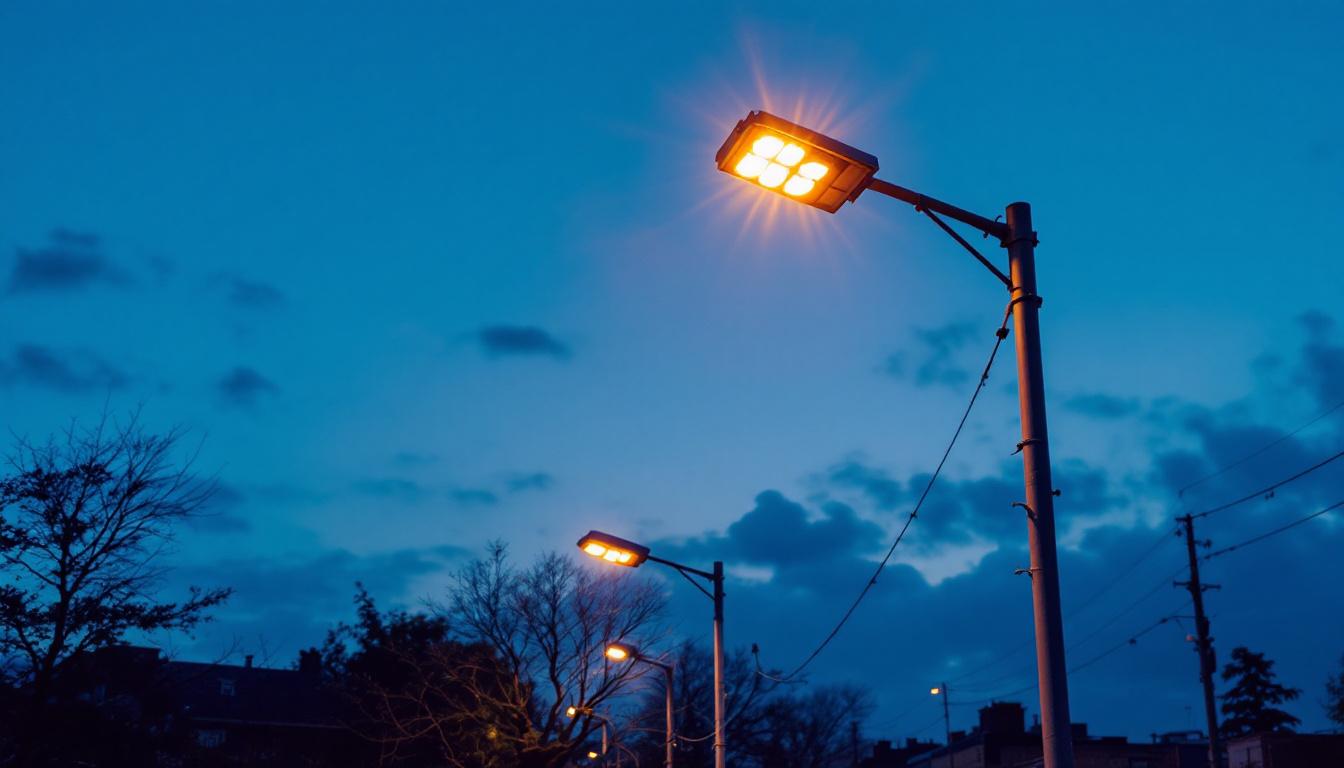
electric switches And Outlets: essential tools for Lighting Contractors
In the world of electrical installations, particularly in lighting, the importance of electric switches and outlets cannot be overstated. These components are not merely functional; they are essential tools that enable lighting contractors to create efficient, safe, and aesthetically pleasing environments. Understanding the various types of switches and outlets, their applications, and best practices can significantly enhance the quality of work delivered by lighting contractors.
Electric switches serve as the primary interface between users and their lighting systems. They allow for the control of electrical circuits, enabling users to turn lights on and off as needed. However, the variety of switches available can be overwhelming, making it crucial for lighting contractors to have a thorough understanding of their options.
There are several types of electric switches that lighting contractors frequently encounter. Each type has its unique features and applications, making them suitable for different lighting scenarios.
Proper installation of electric switches is crucial for both safety and functionality. Lighting contractors should adhere to local electrical codes and standards when installing switches. This includes ensuring that switches are mounted at a comfortable height and are easily accessible.
Additionally, it is important to consider the load capacity of the switch. Using a switch that cannot handle the electrical load can lead to overheating and potential hazards. Therefore, understanding the specifications of the switches being used is essential for a successful installation.
Moreover, the choice of switch materials can also play a significant role in the overall aesthetic and durability of the installation. For instance, switches made from high-quality plastics or metals can enhance the visual appeal of a space while also providing longevity. In areas with high humidity, such as bathrooms or kitchens, moisture-resistant switches are recommended to prevent corrosion and ensure reliable operation over time.
Furthermore, advancements in smart technology have introduced a new category of electric switches that offer even greater control and convenience. Smart switches can be integrated with home automation systems, allowing users to control their lighting remotely via smartphones or voice-activated devices. This not only enhances user experience but also contributes to energy efficiency by allowing users to monitor and manage their lighting usage more effectively.
While switches control the flow of electricity to lighting fixtures, outlets provide a means for plugging in various devices, including lamps and other lighting accessories. The choice and placement of outlets can significantly impact the functionality and aesthetics of a lighting installation.
Just like switches, there are different types of outlets that serve various purposes. Lighting contractors should familiarize themselves with these options to meet the diverse needs of their clients.
Strategic placement of outlets can enhance the usability of a space. Lighting contractors should consider the layout of furniture and the intended use of each area when determining outlet locations. For instance, placing outlets near seating areas allows for easy access to lamps and other lighting devices.
Furthermore, ensuring that outlets are placed at appropriate heights can improve accessibility and reduce the risk of tripping hazards. Outlets should be positioned to accommodate various devices while maintaining a clean and organized appearance.
In addition to traditional placements, incorporating outlets into architectural features, such as baseboards or even within furniture, can create a seamless look while maximizing convenience. This approach not only minimizes visible cords but also allows for a more flexible arrangement of lighting elements, catering to the evolving needs of the space. For example, in a home office, strategically placed outlets can facilitate the use of desk lamps and other electronic devices without cluttering the workspace with extension cords.
Moreover, as smart home technology continues to gain popularity, the integration of smart outlets becomes increasingly relevant. These outlets allow users to control their lighting and devices remotely via smartphone apps or voice commands, adding an extra layer of functionality to lighting installations. By considering the future needs of clients, lighting contractors can ensure that their installations remain relevant and adaptable, enhancing the overall user experience in residential and commercial settings.
Selecting the appropriate switches and outlets for a project involves considering several factors, including the type of lighting, the environment, and the preferences of the client. Lighting contractors must strike a balance between functionality, safety, and aesthetics.
The materials used in switches and outlets can affect both their durability and appearance. For example, switches made from high-quality plastics or metals tend to be more durable and can withstand frequent use. Additionally, the design of switches and outlets should complement the overall aesthetic of the space.
Contractors should also consider the color and finish of switches and outlets. Options range from classic white to more modern finishes like brushed nickel or matte black, allowing for customization that aligns with the client’s vision.
In today’s environmentally conscious market, energy efficiency is a significant consideration. Lighting contractors should be aware of energy-efficient switches and outlets, such as those equipped with timers or occupancy sensors, which can help reduce energy consumption.
Moreover, the rise of smart home technology has introduced a new dimension to switches and outlets. Smart switches and outlets allow for remote control and automation of lighting systems, providing convenience and energy savings. Contractors should stay informed about the latest advancements in smart technology to offer clients the best solutions available.
Proper installation techniques are vital for ensuring the safety and functionality of electric switches and outlets. Lighting contractors should adhere to best practices to avoid common pitfalls and enhance the quality of their work.
Safety should always be the top priority when working with electrical components. Contractors must ensure that the power is turned off before beginning any installation work. Using a voltage tester can help confirm that the circuit is de-energized.
Additionally, wearing appropriate personal protective equipment (PPE), such as insulated gloves and safety glasses, can help minimize the risk of injury during installation. Following safety protocols not only protects the contractor but also ensures the safety of the end-users.
Once the installation is complete, thorough testing is essential. Lighting contractors should check each switch and outlet to ensure they function correctly. This includes verifying that switches operate smoothly and that outlets provide power as expected.
In the event of issues, troubleshooting techniques should be employed. This may involve checking connections, inspecting for damaged wiring, or ensuring that the correct circuit breakers are in place. A systematic approach to troubleshooting can save time and prevent future complications.
Maintenance is often overlooked but is crucial for the longevity and safety of electric switches and outlets. Regular inspections and upkeep can prevent issues and ensure that these components function optimally over time.
Lighting contractors should recommend regular inspections of switches and outlets to their clients. This can help identify potential problems early, such as loose connections or signs of wear and tear. Regular checks can also ensure that GFCI outlets are functioning correctly, as these devices require periodic testing to maintain their protective capabilities.
Keeping switches and outlets clean is essential for both aesthetics and functionality. Dust and debris can accumulate over time, potentially affecting the performance of the devices. A simple cleaning routine, using a damp cloth and mild cleaning solution, can help maintain their appearance and functionality.
Additionally, clients should be educated on the importance of not overloading outlets with too many devices, as this can lead to overheating and other hazards. Providing guidance on proper usage can enhance safety and prolong the life of the electrical components.
Electric switches and outlets are fundamental tools for lighting contractors, playing a critical role in the functionality, safety, and aesthetics of lighting installations. By understanding the various types of switches and outlets, their applications, and best practices for installation and maintenance, contractors can deliver high-quality work that meets the needs of their clients.
As the industry continues to evolve, staying informed about the latest technologies and trends will be essential for lighting contractors. Embracing energy-efficient solutions and smart technology can enhance the value of services offered, ultimately leading to satisfied clients and successful projects.
In the ever-changing landscape of electrical installations, mastery of electric switches and outlets will remain a cornerstone of excellence for lighting contractors. By prioritizing safety, functionality, and aesthetics, contractors can ensure that their installations stand the test of time.
Ready to elevate your lighting installations with the highest quality switches and outlets? Look no further than LumenWholesale, where we provide lighting contractors with spec-grade products at unbeatable wholesale prices. Our extensive selection not only meets but exceeds industry standards, ensuring that every project shines with reliability and performance. Say goodbye to middleman markups and hello to cost-effective, premium lighting solutions. Plus, with free shipping on bulk orders, you can stock up on all your lighting needs without worrying about hidden fees. Don’t compromise on quality or value—Wholesale Lighting at the Best Value is just a click away. Experience the LumenWholesale difference today!

Discover why lighting contractors should prioritize garage light fixtures in their projects.

Discover the science behind electric light posts and how understanding their design benefits lighting contractors.

Discover the essential insights lighting contractors need to know about sconces.

Explore how LED outdoor floodlights are revolutionizing the work of lighting contractors by offering energy efficiency, durability, and ease of installation.